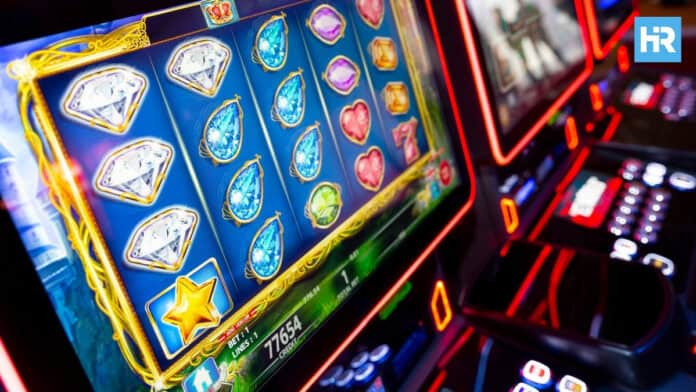In the world of online and land-based gaming, few terms carry as much weight as RTP, or Return to Player.
This figure shapes the design of slot machines and serves as a guidepost for anyone looking to make informed choices when playing. By understanding how slot RTP works, it becomes possible to recognize the subtle math behind spinning reels, anticipate long-term patterns and approach bankroll planning with greater clarity.
Understanding RTP and House Edge in Slot Machines
As more players shift to regulated and alternative platforms, such as top sweepstakes casinos, the importance of transparency regarding RTP continues to grow.
Return to player, commonly known as RTP, reflects the percentage of all wagered money that a slot machine is programmed to pay back to players over time. Closely tied to the concept of house edge, RTP offers insight into how casinos maintain profitability while still giving players a fair chance at winnings.
Slot RTP and House Edge Slots Explained
When people ask, “What does RTP mean in slots?”, the answer lies in the relationship between RTP and house edge.
If a slot has an RTP of 96 percent, it means the house edge is 4 percent, as house edge equals 100 percent minus RTP. This calculation ensures that while payouts are designed to occur over the long haul, casinos retain a predictable profit margin.
Understanding this relationship is the foundation of what is often referred to as the house edge in slots.
RTP becomes meaningful only after a large enough number of spins. In short sessions, outcomes can fluctuate widely, but after millions of spins, the result tends to align with the programmed percentage.
For instance, wagering $1 over 100 spins on a 96 percent RTP slot might return anywhere from $40 to $180 depending on variance, but across millions of plays, the average will settle closer to $96 back for every $100 wagered.
Average RTP for Slots and Why It Varies
Another common question is: What is the average RTP for slots?
Both in local land-based casinos, as well as among the best offshore casinos found online, modern online games typically fall between 94 and 97 percent (although some high RTP slots list values exceed 98 percent).
The differences often come down to game design, regulatory frameworks and operator preferences. Online titles like Mega Joker by NetEnt boasts some of the highest returns, while land-based machines usually skew lower.
The reason lies in the higher operational costs of physical casinos, as well as differing jurisdictional rules. This makes it especially important to distinguish between online vs land-based RTP when evaluating long-term play.
Some developers even create multiple versions of the same slot, each with different RTP settings, allowing casinos to choose the variant that fits their business model. With this in mind, players researching a high RTP slots list sometimes see a single game advertised with several percentages.
The figure is not arbitrary; it reflects carefully designed decisions that balance entertainment value and profitability.
RTP, Volatility and Game Design Factors
Return to player is only one piece of the puzzle when evaluating slot performance. Game volatility and hit frequency also shape the player experience, influencing how often wins occur and how large those payouts tend to be.
Understanding the relationship between these factors helps clarify why some games feel streaky, while others provide smaller but more consistent returns.
RTP vs Volatility vs Hit Frequency
Many newcomers confuse RTP with volatility or hit frequency, but these terms measure different aspects of a game. RTP reflects long-term payback percentage, volatility measures the risk profile of payouts and hit frequency shows how often a spin results in any win.
For example, imagine two different games, both programmed with a 96 percent RTP. Slot A has a hit frequency of 20 percent, meaning it delivers a win roughly once every five spins, but the payouts are often larger. Slot B has a hit frequency of 40 percent, so it pays more frequently, but in smaller amounts.
Both games will eventually average out at 96 percent, but the player experience feels completely different. Understanding RTP vs volatility and comparing hit frequency vs RTP helps explain why slots with the same return rate can feel so different in practice.
Features and Variants That Affect Effective RTP
While RTP values are programmed into the base game, additional features can alter how returns are realized. Progressive jackpots, for instance, divert a portion of each wager to the jackpot pool, lowering the base game’s effective return. Some titles balance this by offering life-changing prizes, but the trade-off is that the day-to-day payouts may feel tighter.
Bonus features also add layers to how RTP plays out; sticky wilds, respins, expanding reels and multipliers can all increase volatility while keeping the long-term RTP percentage unchanged. Players who buy their way into a bonus round may see an adjusted effective RTP because the feature is priced separately from base spins.
Free spins or promotional bonuses from operators can further impact the realized return, depending on the wagering requirements.
Finally, differences appear when comparing online vs land-based RTP. Online versions generally sit higher, averaging around 96 percent, while land-based slot machines often operate closer to 88 to 92 percent.
Operating expenses, tax structures and regulatory frameworks explain much of this gap, making online platforms more appealing for those who prioritize long-term return.
Casino and Operator Practices
Slot RTP values are not always as straightforward as they seem. Beyond game design, operators and regulators play a critical role in how RTP is presented, accessed and sometimes altered.
Knowing how to find a game’s return rate and understanding whether it can differ between platforms are essential steps for informed decision-making.
How to Find RTP in a Slot
Many players are unaware that information about RTP is often embedded within the game itself. Details can usually be found in the help menu, information tab or on a provider’s official game sheet. Some operators also include RTP figures on their websites, particularly regulated platforms such as Maryland online casinos.
Learning how to find RTP in a slot equips players with the tools to distinguish between titles that may look identical on the surface, but operate differently behind the scenes.
In regulated jurisdictions like the United Kingdom, disclosure of RTP values is mandatory, which helps players compare options more easily. Other regions allow operators more flexibility, resulting in less consistent transparency.
This is one reason players researching slots across multiple platforms often encounter information gaps. The ability to locate a game’s RTP directly impacts the capacity to make smarter choices before wagering.
Can Casinos Change RTP and Common Variants
Another common question raised by players is: Can casinos change RTP? The answer is yes, but it depends on the jurisdiction and the slot provider.
Many popular titles are developed with multiple RTP versions, often ranging from 92 percent to 97 percent. Operators may choose which version to implement, giving them flexibility to align with local regulations or revenue goals.
For example, a slot like Buffalo King Megaways may exist in a 96 percent version for certain regulated online casinos, while an alternative 94 percent version is offered elsewhere. Lowering the RTP by even a few percentage points can significantly increase a casino’s long-term revenue without altering the outward appearance of the game.
Industry watchdogs encourage transparency so that players are aware when multiple variants exist. Understanding these differences ensures that when compiling a high RTP slots list, the data reflects the correct version, rather than an idealized maximum.
Player Strategy, Myths and Tools
RTP data provides valuable insights, but misconceptions and poor planning often lead to unrealistic expectations. Understanding the common myths surrounding slot machines and learning practical ways to utilize RTP in bankroll management can lead to a more strategic approach to play.
RTP Myths Debunked
Misinformation often surrounds the concept of return to player slots. Some believe RTP guarantees profit after a certain number of spins, while others claim that ‘hot’ or ‘cold’ machines exist or that time of day influences outcomes. These assumptions have been widely disproven.
Outcomes are determined by random number generators, meaning every spin is independent.
Another common myth is that changing bet size alters the underlying RTP of a game. While larger bets may unlock bonus features or jackpot eligibility, the programmed RTP percentage remains constant.
Similarly, the belief that machines ‘tighten up’ after large payouts has no basis in the math.
Recognizing debunked RTP myths allows players to evaluate games based on factual mechanics rather than superstition.
Practical Bankroll Tips and Expected Loss Formula
RTP is not only about percentages; it also helps frame session budgets through expected-loss math. By applying the formula Expected Loss = Total Wager × (1 − RTP), players can anticipate how much of their stake may be lost over time. For example, wagering $1 per spin for 500 spins on a 96 percent RTP slot means an expected loss of $20.
Consider two bankroll scenarios: With $100 to spend and bets of $0.50 per spin, the player can expect about 200 spins, with an average expected loss of around $4. With $2 bets, the same bankroll allows only 50 spins, with an average expected loss of $4 as well, but the volatility makes it more likely that losses will occur faster.
This comparison shows why RTP is more useful when paired with session planning and volatility awareness.
Some platforms even offer calculators to simplify this process, particularly among no-KYC casinos and other operators that promote transparency. Establishing these habits supports healthier bankroll management and highlights why slot RTP explained in mathematical terms is a cornerstone of smarter play.
What is RTP in Slots?: Now You Know
Return to player remains one of the clearest indicators of how slot machines are designed to function over time. By exploring RTP alongside volatility, hit frequency, operator practices and bankroll strategies, the broader picture of slot performance becomes easier to understand.
Staying informed about how these numbers work provides an edge in navigating an industry that balances entertainment value with built-in statistical advantage.
Making oneself aware of updates about what is RTP in slots ensures that the conversation around fairness and smarter choices remains active. Staying alert to new developments, regulatory changes and evolving slot designs will always be key to approaching the reels with knowledge rather than guesswork.






